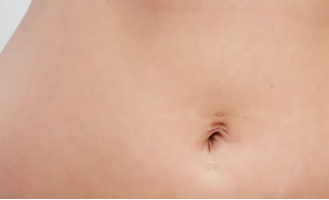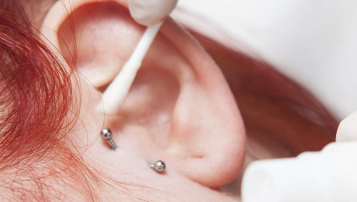Body Piercing: Types, Risks, and Aftercare
Piercing is a popular form of body modification that has been around for centuries. It can be done for many reasons, including cultural or religious reasons and self-expression. Piercings can be done on any part of the body, and there are many different types of piercings. In this blog post, we will discuss the different types of piercings, the risks associated with them, and how to care for them after they have been pierced.
Types of piercings

There are many different types of body piercings, each with its unique look.
l Ear piercing
One of the most popular types of body piercings is ear piercing. Ear piercings can be done in many different places, including the lobe, cartilage, and tragus.
l Nose piercing
Another popular type of piercing is nose piercing. Nose piercings can be done in the nostril or septum, and they come in a variety of designs and sizes.
l Lip piercing
Lip piercings are also fairly common, and they can be done in many different places, including the center of the lip, the side of the lip, or the top or bottom of the lip.
l Tongue piercing
Tongue piercings are another type of popular piercing, and they can add a lot of personality to your appearance.
l Navel piercing
Finally, navel piercings are a type of piercing that has become increasingly popular in recent years. Navel piercings can be done in a variety of places, including the top of the navel, the side of the navel, or through the actual belly button.
No matter what type of body piercing you choose, it's important to consult with a professional piercer to ensure that it's done safely and correctly.
Risks associated with piercing

While there are many benefits to body piercing - including the fact that it can be a form of self-expression - there are also some risks that should be considered.
l Infection
One of the most significant risks is infection. When piercing the skin, there is always the risk of bacteria being introduced into the body, which can lead to serious infection.
l Nerve damage
In addition, body piercings can also cause nerve damage. This is particularly true for piercings that are located close to nerves, such as earlobe piercings.
l Scars
Finally, body piercings can also lead to scarring. While this is usually not a serious concern, it can be a cosmetic issue for some people.
Overall, there are both risks and benefits to body piercing. It's important to weigh both before deciding to pierce your body.
Aftercare of a new piercing

A new piercing is an exciting way to change up your look, but it's important to take proper care of it during the healing process.
l Method
The best way to clean a new piercing is with a gentle salt water solution. You can make this by mixing 1/4 teaspoon of sea salt with 8 ounces of warm water. Soak a cotton ball in the solution and use it to clean the piercing twice a day. Avoid using harsh chemicals or scrubbing the piercing, as this can irritate the skin. It's also important to avoid touching or playing with the piercing, as this can increase the risk of infection.
If you notice any redness, swelling, or discharge, contact your piercer or doctor. With proper care, your new piercing will heal quickly and be a beautiful addition to your appearance.
Conclusion
Body piercing is a form of self-expression and the meanings behind different piercings vary from person to person and can be as simple as wanting something pretty or as complex as marking a significant life event. So, don’t be afraid to express yourself, you could choose the wholesale body jewelry you like, pierce them and tell your story.









1609